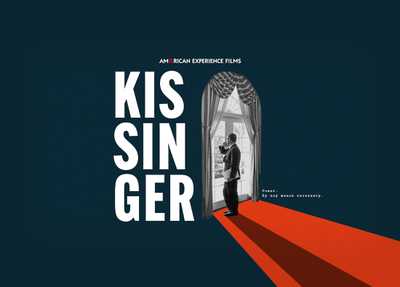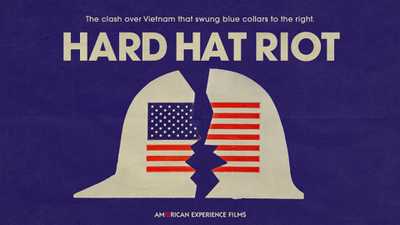'We are in the worst crisis we have known since the Civil War'
When the city of Detroit went up in flames in 1967, it was the most deadly civil uprising of the century


This article is the sixth in a series called A Thousand Words, where we feature an interesting image from one of our films alongside an essay about why that picture is worth, well, a thousand words.
The frame brims with human emotion: fear, dismay, resignation. Defiance. A Black man stares down three white armed National guards, his arms crossed and hip cocked. Smoke clouds the sky above them. This particular street scene in July 1967 was captured in Detroit, but it might have been taken in so many of the 150 cities where racial strife consumed the country that same year. Urban uprisings across the United States resulted in scores of deaths and millions of dollars of damage; entire city blocks were reduced to rubble. “The simple fact is this: We are in the worst crisis we have known since the Civil War,” said a television journalist in September of that year.
The roots of Detroit’s discontent went back decades. Blacks came to the city en masse during the Great Migration, growing from a population of around 5,000 in 1910 to 480,000 in 1960. That nearly 100-fold increase, however, wasn’t accompanied by expanding opportunity. Restrictive redlining practices consigned them to only a few neighborhoods, meaning a third of the city’s population lived in overcrowded, substandard housing. Black Detroiters also had fewer economic opportunities. They struggled to get work that paid as well as their white counterparts, and as the city began to lose jobs with the collapse of the automotive industry, Blacks were often the first fired. And the community’s relationship with the Detroit police had long been fraught, with Black residents on the brunt end of disproportionately harsh treatment.
In these conditions—de facto segregated housing, schooling, employment, and a history of police brutality—Detroit resembled other inner cities that had already erupted in protest in the years leading up to 1967. In 1964, the Harlem and Bedford Stuyvesant sections of New York broke out in violence after a white police officer shot and killed a Black 15-year-old. The next year, 1965, civil unrest consumed the Watts neighborhood of Los Angeles for nearly a week after a run-in between residents and police; 1966, more uprisings in Chicago and Cleveland followed the same pattern. And before Detroit combusted in mid-summer 1967, already 33 cities were in turmoil, with Newark, New Jersey suffering worst so far. In that city, white police officers beat a Black cab driver in full view of a public housing project. Twenty-six people died in the six days of public uproar and official crackdown that followed.
All of these urban rebellions made one thing clear: racism wasn’t just a southern problem. “We think of the civil rights movement and Jim Crow, the heart of it being in the South,” notes UC Berkeley professor john a. powell [sic]. “But you had cities all across the country up in flames. And those reactions to the continued oppression of blacks, it was never just spontaneous. It was always responding to some state-formed oppression.”
Those reactions to the continued oppression of blacks, it was never just spontaneous. It was always responding to some state-formed oppression." - john a. powell
These currents were all swirling in Detroit. In June, a Black Vietnam veteran had been killed by a gang of white youths after he took his pregnant wife to a public park bordering a white neighborhood. Then, in the early hours of July 23rd, the police broke up a party taking place at an illegal social club in a predominantly Black neighborhood on the city’s west side; the building doubled as headquarters for the United Community and Civic League, a local activist group. The club’s patrons had gathered to celebrate the return of two veterans from Vietnam, but instead found themselves being shoved roughly into paddy wagons. As the arrests continued, a large crowd gathered, protesting the officers’ treatment of the arrestees; someone eventually threw a brick at a police cruiser. Others joined in with bottles and sticks. Someone smashed the window of a nearby store, and looting began. Fires spread. By the next day, flames had devastated entire blocks.

Law enforcement responded harshly. “You cannot fight violent criminals with non-violent methods,” said a spokesperson for the Detroit Police Officers Association. “We had a war and I think you have to attack a war with warlike weapons and under warlike conditions.” Michigan governor George Romney called in the National Guard. Its young, untrained guardsmen, however, fomented more chaos. Five days later, 43 people had died, with hundreds more injured—at the time the most deadly civil uprising of the century.
Even as Detroit still burned, Johnson announced the formation of a presidential commission to study the chaos engulfing the country. He posed three questions to its 11 members: ‘What happened? Why did it happen? What can be done to prevent it from happening again?’ Led by Gov. Otto Kerner Jr. of Illinois, the National Advisory Commission on Civil Disorders—known colloquially as the Kerner or Riot Commission—conducted an on-the-ground assessment in 23 cities where disturbances had taken place, including Detroit. It interviewed 1,200 witnesses and officials, including residents, mayors, police chiefs and Black Power representatives.
The commission was a nearly all-male, all-white panel, and yet when it issued its final analysis, it offered a sweeping statement about the origins of the tinder stoking each urban conflagration. “Segregation and poverty have created in the racial ghetto a destructive environment totally unknown to most white Americans,” read the report’s introduction. “What white Americans have never fully understood—but what the Negro can never forget—is that white society is deeply implicated in the ghetto. White institutions created it, white institutions maintain it, and white society condones it.”
Ultimately, however, few of its recommendations for addressing these structural forces were implemented. “The Kerner Commission comes down and concedes that the country is broken,” professor powell told American Experience, “and that we should make rapid and radical change.” Yet, as is often the case with presidential commissions, political exigencies—in this case, the ire of white voters who ultimately elected law-and-order candidate Richard Nixon to the presidency—consigned its findings to history, rather than to the future.
“We’ve had many lost opportunities,” powell observes, while still noting the report’s ongoing relevance. “Kerner Commission—at best—is an opportunity postponed. I think if we do move forward, we will have to come back to that commission.”

At American Experience we're always coming across photos from the past that we can't stop thinking about—images that are worth a thousand words.






